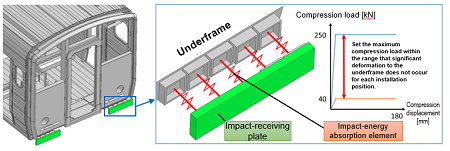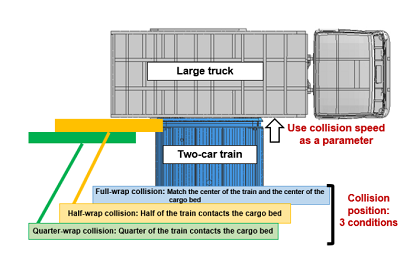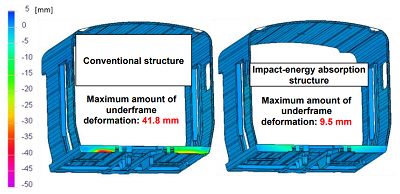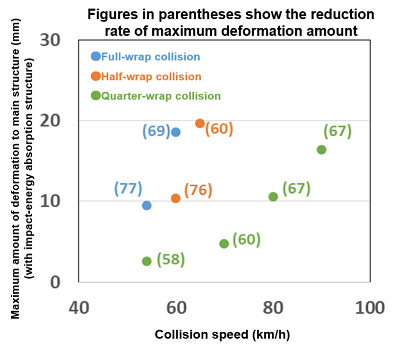25. Impact-enegy absorption structure to suppress deformation of an aluminum alloy carbody structure in a collision
When a carbody is damaged significantly in a grade crossing accident, the train cannot be used for an extended period of time due to the restoration of it. Aiming to achieve early restoration of a carbody following such an accident, a basic examination was performed regarding a replaceable impact-energy absorption structure for a carbody made of aluminum alloy for use on conventional lines with restoration issues.
An arrangement has been proposed, as shown in Fig. 1, to install replaceable impact-energy absorption structures in front of the underframe (floor framing) having relatively high strength and rigidity. As they can be attached to an existing carbody structure, no large-scale design change is necessary, making them practical use at a low cost.
To verify the effectiveness of this structure, a collision analysis with a large truck (vehicle weight: 9.2 tons, without cargo) was implemented (Fig. 2).
In the case of a full-wrap collision condition with a collision speed of 54 km/h, significant deformation was observed on the underframe, which is the main structure, for the conventional structure; whereas maximum deformation was reduced by about 77% when the impact-energy absorption structure was used (Fig. 3).
Figure 4 shows the maximum deformation amount of the main structure (underframe) and reduction rate of it under each collision condition. For example, if a maximum deformation amount of 10 mm is allowable, early restoration of a carbody can be deemed possible when the collision speeds are up to about 55 km/h for a full-wrap collision, about 60 km/h for a half-wrap collision, and about 80 km/h for a quarter-wrap collision, and thus, the period when the train cannot be available can be reduced to a minimum.




